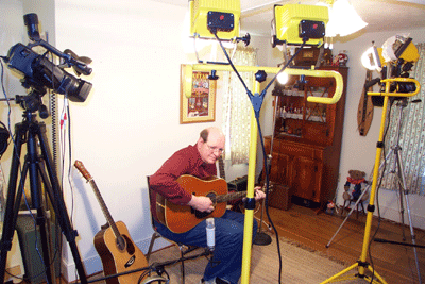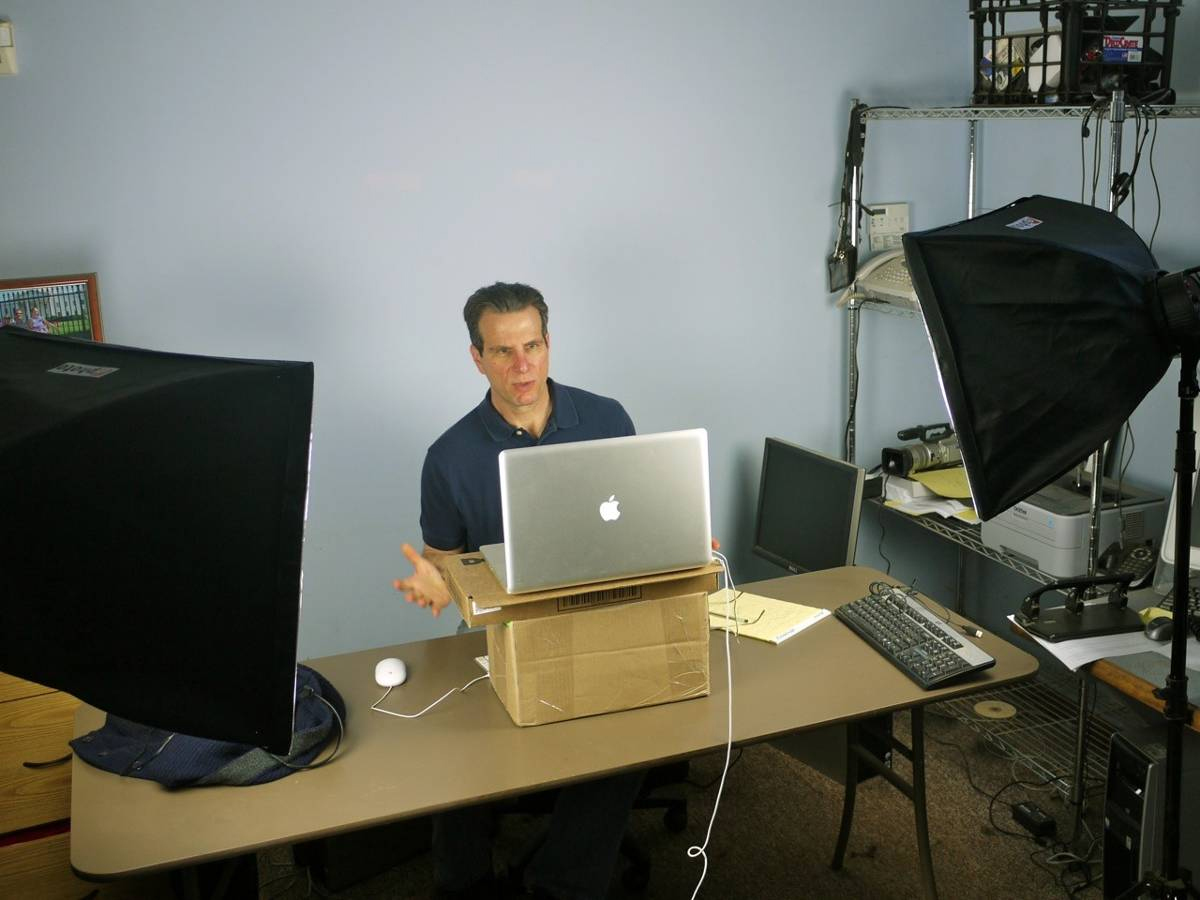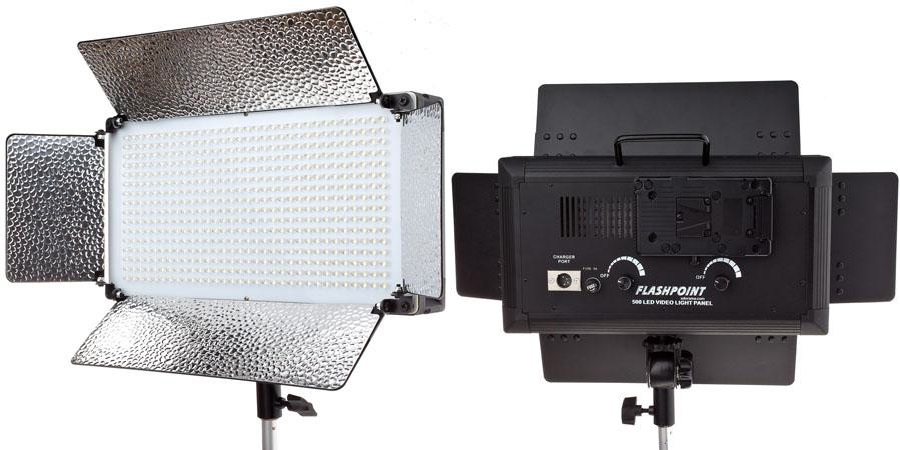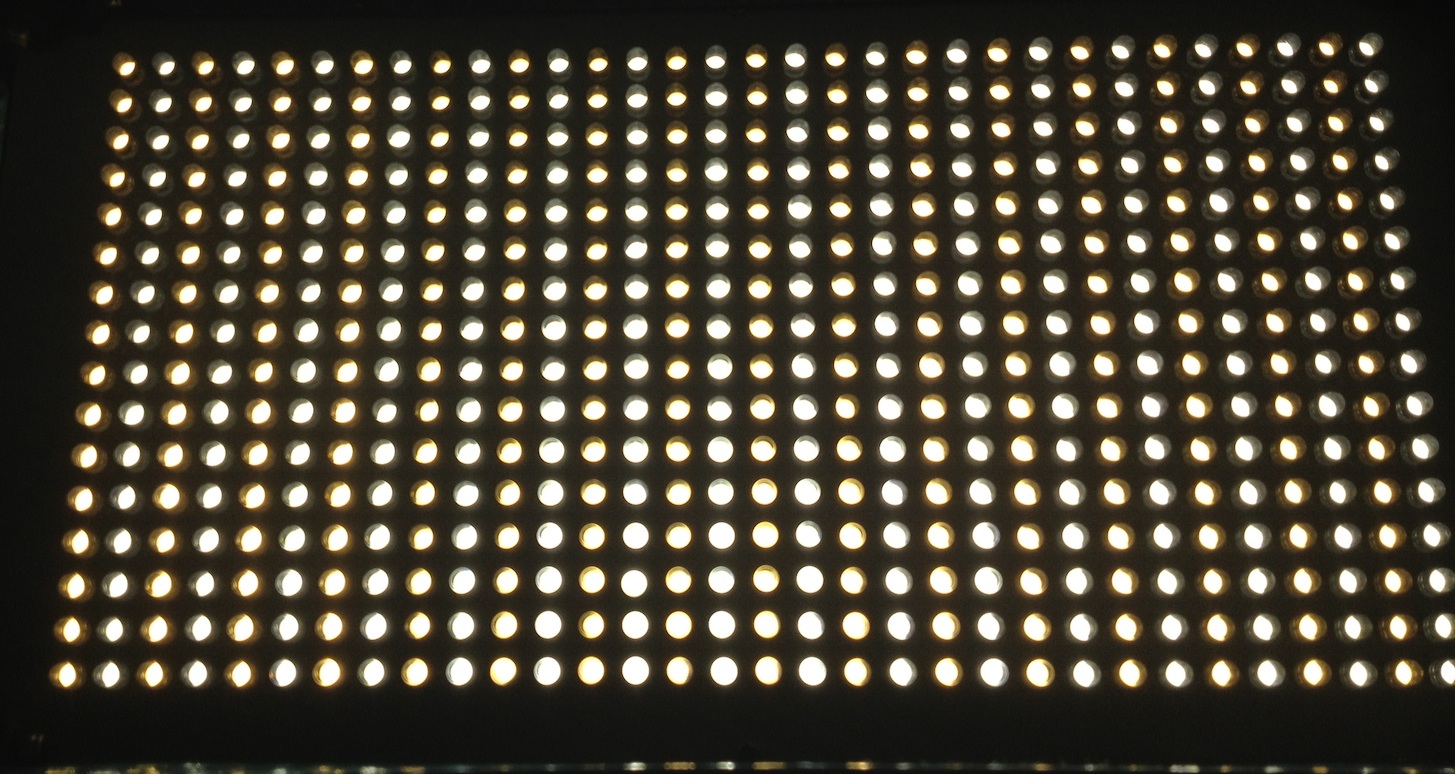Review: Adorama Flashpoint LED Lights
With only 250 incandescent or daylight-balanced lights, the Adorama Flashpoint 500C feels like a niche product suitable primarily for producers who need to support both incandescent and daylight-balanced light in single light. Given the improved mounting options and fit and finish, Jan Ozer reports that he'd buy it in a heartbeat if it offered all daylight-balanced bulbs.
I recently used two Adorama Flashpoint LED lights (the 500 and 500C) on several shoots. It was the first time that I've worked with LED lights, and now I'm totally sold on LED lighting--so much so that I've put my bulky CF softboxes up for sale. The Flashpoint lights themselves had some issues, which I detail below. Let's start with some background on how inexpensive lighting has transitioned over the last decade or so.
Some Background
About 10 years ago, when I started serious shooting, I didn't have the budget for a $1,200 light kit, so I did what many others did at that time: I bought a shop light from Lowe's or Home Depot and made it work. These shop lights generated copious amounts of light, but the power required to create this light was also significant, and I popped more than one circuit breaker during my various shoots.
The light was also a hard light that that you had to diffuse to use. Of course, these shop lights came with no gel holders so you had to make your own, which usually involved wooden clothes pins and diffusion filters that often became so hot they started smoking, which never failed to impress the client, who didn't like the light in the first place because they were so damn hot (Figure 1, below). The lack of attachments also made it difficult to focus the light, though that was generally OK, since flat lighting was the best technique for streaming anyway, and as long as the light was sufficient and diffused, the ability to focus the light became secondary.

Figure 1. My light kit on a shoot around 2004.
Then, in about 2009, compact fluorescent (CF) light kits hit the scene, providing sub-$200 entry into the fluorescent light kits that many of us had coveted over the years but couldn't afford. These CF kits (Figure 2, below) didn't produce the same quantity of light as the shop lights, but because they ran cool, you could put them much closer to the subject and run them longer without fear of flaming.

Figure 2. My compact fluorescent softbox-based light kit.
Fluorescent lights are soft by definition, and the CF kits came with softboxes that helped focus the light a bit with additional diffusion covers available if required. Unlike tungsten, which is yellowish in color so very seldom matches the light flowing in the window, often you can use CF kits in conjunction with daylight without fear of hosing your white balancing. Of course, you couldn't use your CF kits with your shop lights without some kind of gel, since the color temperature didn't match.
Though the positives far outweighed the negatives, CF lighting did have some negatives. For example, softboxes are a pain to setup and take down, making them hard to use on the road. Inexpensive kits offer no focusing options, so if you need to focus the light-say, to function as a back or hair light--it's difficult to do. Softboxes are big and ungainly, so are tough to fit into tight spaces while shooting, and inconvenient to store when not packed up.
LED Lighting: The Best of Both Worlds
Enter LED lighting, which combines the compactness and (much of the) power of tungsten lighting with the best characteristics of CF lighting, producing a soft, daylight-balanced light with minimal power consumption or heat production. As you can see in the following two figures, both Adorama units come with barn doors for focusing, which is very difficult to do with CF softboxes. They're also both small, so are easy to fit into tight spaces, and though they don't come with cases, easy to take on the road.
I spent the most time with the Flashpoint 500 LED Dimmable light ($239.95 list, currently selling for $199.95), which has 500 LED bulbs, all daylight balanced. This light is shown in Figure 3 (below).

Figure 3. The Adorama 500 LED dimmable light.
The second light was the Flashpoint 500C LED, which is shown in Figure 4 (below). Like the 500, this unit has 500 bulbs, but 250 are daylight balanced, 250 are incandescent.

Figure 4. The Adorama Flashpoint 500C LED dimmable light.
You can see this in Figure 5 (below), where half the lights look white and the other half yellow. In operation, one of the two knobs on the back controls the white bulbs, the other the yellow bulbs. If you turn both sets of lights to the max, you get 500 bulbs of mixed lighting which probably won't cause any problems if that's the only light you're using, but will be impossible to match with other lights that don't mix color balance in this way. If you go one way or the other, you get 250 bulbs maximum lighting, which may be enough for fill lighting, but probably isn't sufficient
for key lighting.

Figure 5. The Flashpoint 500C has 250 daylight balanced bulbs, and 250 incandescent bulbs.
Said another way, unless you're looking for a single light that can supply relatively weak levels of incandescent and daylight balanced light, the 500C makes little sense. If all of your other gear is daylight balanced, the unit is a non-starter, which is a shame because mounting and other options are a vast improvement over the 500.
Regarding mounting, as you can see in Figure 3, you mount the 500 via an external bracket that connects to a light stand adapter for a 5/8" stud. You can tilt the light up or down but you can't mount it vertically. In contrast, the 500C comes with a removable yoke with a tilt bracket that you can connect on all four sides of the unit, so you can mount it vertically or horizontally, and tilt it as desired. The 500C also comes with a V Lock mount for a Lithium-ion battery so you can use the unit without AC power, with Adorama offering a 162.8 watt battery from Flashpoint for
$199.95.
Related Articles
Adorama's Flashpoint 1300 LED Panel light is powerful, flexible and well-featured as a standalone light and can be easily integrated into two- and four-light panels should the need arise.
In this review we're going to look at the Adorama Flashpoint line of Cinema DSLR Gear. We're going to start off with a broadly compatible and modular system including the Mattebox, the Shoulder Rig, and the Follow Focus, and finish off (in a separate review) with Adorama's 7-inch LCD monitor.
Designed for use with DSLR cameras and essential for shooting video in daylight, the Flashpoint Swivi is a professional LCD Viewfinder loupe that provides a clear, magnified view of the camera LCD